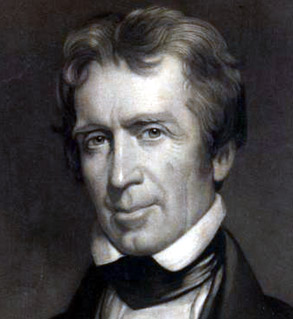 Jeremiah Chamberlain
Jeremiah Chamberlain
Centre College President (1822-1826)
Jeremiah Chamberlain was born on January 5, 1794, and grew up on the family farm near Gettysburg, Pennsylvania. He was prepared at a classical school in York County before attending Dickinson College in Carlisle, Pennsylvania, where he graduated in 1814. In 1817 he was a member of the first graduating class of Princeton Theological Seminary, and upon his return to Carlisle was ordained by the Carlisle Presbytery. Chamberlain spent the next year performing missionary work in the Southwest. He returned to Pennsylvania in 1818 and began preaching in Bedford, Pennsylvania. Chamberlain was to soon move again, for on December 31, 1822, the trustees of Centre College elected him president at an annual salary of $2,000. Chamberlain was inaugurated on July 2, 1823.
Chamberlain found a school in grave financial trouble. Although nominally a state institution, the state legislature itself had little interest and even fewer resources to adequately support the struggling college. Even though Presbyterian influence was predominate at the school, the Presbyterian Synod would not offer financial help because it was not officially under control of the church. In 1824 an agreement was reached to amend the original charter to allow exclusive Presbyterian control of Centre. In exchange for a gift of $20,000 to the college, to be given in four annual installments, the Synod was given the right to elect members to the Board of Trustees. The governing control of the institution passed from the state to the Presbyterian Church.
Chamberlain resigned as Centre's president in 1826 to accept the presidency of the College of Louisiana in Jackson, Louisiana, but left that position in 1828 to establish his own academy. Two years later he convinced the Mississippi Presbytery to establish a new college in Lorman. Thus he became Oakland College's first president in 1830, and served the school until his death in 1851. Oakland College closed at the start of the Civil War, and failed to reopen after the end of the hostilities. In 1871 the Oakland campus was sold to the state of Mississippi and Alcorn A&M College was established on the site. Oakland College was resurrected in 1879 at nearby Port Gibson as Chamberlain-Hunt Academy, a Presbyterian preparatory school. Much of the college's scientific apparatus and library, including Chamberlain's books and papers, were moved to the new location, and later to the Mississippi Department of Archives and History.
Chamberlain's death has been the topic of speculation. What is known is that on the night of September 5, 1851, he was stabbed to death in front of his home on the Oakland campus by a local landowner named George Briscoe. Several witnesses saw Briscoe stop at the gate of Chamberlain's home; the president went out to meet him, and after an exchange of heated words, he was stabbed in the chest. Chamberlain retreated to the house, and died in the arms of his wife minutes later. Briscoe rode off and was not found for several days after the murder; he avoided detection by hiding in the woods near his plantation. Remorseful about his actions, Briscoe poisoned himself and died within a week. The reason for the murder was never ascertained, but it is believed that Briscoe reacted to Chamberlain's staunch anti-slavery and pro union sentiments.

